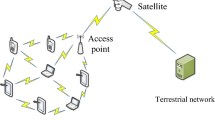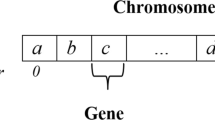Abstract
There has been a spectacular growth in the use of wireless networks in recent times and consequently, adapting TCP to the wireless networks is a hot topic of current research. However, most of the existing works proposed for this problem have been designed for specific wireless networks, or they necessitate changes at either the receiver or the intermediate nodes, or at both, because of which their deployment becomes difficult. In this work, we propose a TCP variant which works over both multi-hop ad hoc wireless networks as well as single-hop (last-hop) wireless networks, like Wireless LANs, cellular, and satellite networks. We use a learning based method to dynamically change the congestion window size according to the network conditions. Our protocol does not rely on any explicit feedback from the network and requires only sender-side modifications. Through extensive simulations we show that our protocol achieves the desired goals of performance improvement in goodput, reduction in packet loss, and fairness to the competing flows. To the best of our knowledge, this is the first unified solution for both single-hop and multi-hop wireless networks.






































Similar content being viewed by others
Notes
Throughout this paper, we use the term network components to denote the intermediate nodes on the path or the receiver.
References
Tian, Y., Xu, K., & Ansari, N. (2005). TCP in wireless environments: Problems and solutions. IEEE Communications Magazine, 43(3), S27–S32.
Gurtov, A., & Floyd, S. (2004). Modeling wireless links for transport protocols. ACM Sigcomm Computer Communication Review, 34(2), 85–96.
Barakat, C., Altman, E., & Dabbous, W. (2000). On TCP performance in a heterogeneous network: A survey. IEEE Communication Magazine, 38(1), 40–46.
Akyildiz, I. F., Zhang, X., & Fang, J. (2002). TCP-peach+: Enhancement of TCP-peach for satellite IP networks. IEEE Communication Letters, 6(7): 303–305.
Katabi, D., Handley, M., & Rohrs, C. (2002). Congestion control for high bandwidth-delay product networks. In Proceedings of ACM Sigcomm (pp. 89–102).
Jain, A. K., & Floyd, S. (2002). Quick-start for TCP and IP. In Internet draft draft-amit-quick-start-01.txt, IETF.
Tan, K., Song, J., & Zhang, Q. (2005). A compound TCP approach for high-speed and long distance networks. In Proceedings of ACM Mobihoc (pp. 288–299).
Sinha, P., Nandagopal, T., Venkitaraman, N., Sivakumar, R., & Bharghavan, V. (1999). WTCP: A reliable transport protocol for wireless wide-area networks. In Proceedings of ACM Mobicom (pp. 231–241).
Goff, T., Moronskim, J., & Phatak, D. S. (2000). Freeze-TCP: A true end-to-end TCP enhancement mechanism for mobile environments. In Proceedings of IEEE infocom (pp. 1537–1547).
Mondal, S. A. (2009). Improving performance of TCP over mobile wireless networks. Wireless Networks Journal, 15(3), 331–340.
Balakrishnan, H., Seshan, S., Amir, E., & Katz, R. H. (1995). Improving TCP/IP performance over wireless networks. In Proceedings of ACM Mobicom (pp. 2–11).
Barked, A., & Badrinath, B. R. (1995). I-TCP: Indirect TCP for mobile hosts. In Proceedings of IEEE ICDCS (pp. 136–143).
Bhandarkar, S., Sadry, N. E., Reddy, A. L. N., & Vaidya, N. H. (2005). TCP-DCR: A novel protocol for tolerating wireless channel errors. IEEE Transactions on Mobile Computing, 4(5), 517–529.
ElRakabawy, S. M., Klemn, A., & Lindemann, C. (2005). TCP with adaptive pacing for multihop wireless networks. In Proceedings of ACM Mobihoc (pp. 288–299).
Nahm, K., Helmy, A., & Kuo, C. J. (2005). TCP over Multihop 802.11 networks: Issues and performance enhancement. In Proceedings of ACM Mobihoc (pp. 277–287).
Venkata Ramana, B., Manoj, B. S., & Murthy, C. S. R. (2005). Learning-TCP: A novel learning automata based reliable transport protocol for ad hoc wireless networks. In Proceedings of IEEE Broadnets (pp. 521–530).
Xu, K., Tian, Y., & Ansari, N. (1995). Improving TCP performance in integrated wireless communications networks. In Proceedings of IEEE ICDCS (pp. 136–143).
Mascolo, S., Casetti, C., Gerla, M., Snadidi, M., & Wang, R. (2001). TCP westwood: Bandwidth estimation for enhanced transport over wireless links. In Proceedings of ACM Mobicom (pp. 287–297).
Akan, O. B., & Akyildiz, I. F. (2004). ATL: An adaptive transport layer suite for next-generation wireless internet. IEEE Journal on Selected Areas in Communications, 22(5), 802–817.
Yang, Y. R., & Lam, S. S. (2000). General AIMD congestion control. In Proceedings of IEEE ICNP (pp. 187–198).
Narendra, K. S., & Thathachar, M. A. L. (1989). Learning automata: An introduction. New Jersey: Prentice Hall.
Thathachar, M. A. L., & Sastry, P. S. (2004). Networks of learning automata: Techniques for online stochastic optimization. Kluwer: New Jersey.
Brakmo, L., & Peterson, L. (1995). TCP vegas: End-to-end congestion avoidance on global internet. In IEEE Journal on Selected Areas in Communications, 13(8), 1465–1480.
Samaraweera, N. K. G. (1999). Non-congestion packet loss detection for TCP error recovery using wireless links. Proceedings of IEE Communications, 146(4), 222–230.
Benveniste, A., Metivier, M., & Priouret, P. (1987). Adaptive algorithms and stochastic approximations. New York: Springer.
Kushner, H. J., & Yin, G. G. (1997). Stochastic approximation algorithms and applications. New York: Springer.
Chandrayana, K., Ramakrishnan, S., Sikdar, B., Kalyanaraman, S., Balan, A., & Tickoo, O. (2006). On randomizing the sending times in TCP and other window based algorithms. Computer Networks Journal, 50(3), 422–447.
Acknowledgments
The authors would like to thank the anonymous reviewers for their valuable comments and suggestions. This work was supported by the Department of Science and Technology, New Delhi, India.
Author information
Authors and Affiliations
Corresponding author
Rights and permissions
About this article
Cite this article
Badarla, V., Siva Ram Murthy, C. A novel learning based solution for efficient data transport in heterogeneous wireless networks. Wireless Netw 16, 1777–1798 (2010). https://doi.org/10.1007/s11276-009-0228-4
Published:
Issue Date:
DOI: https://doi.org/10.1007/s11276-009-0228-4




